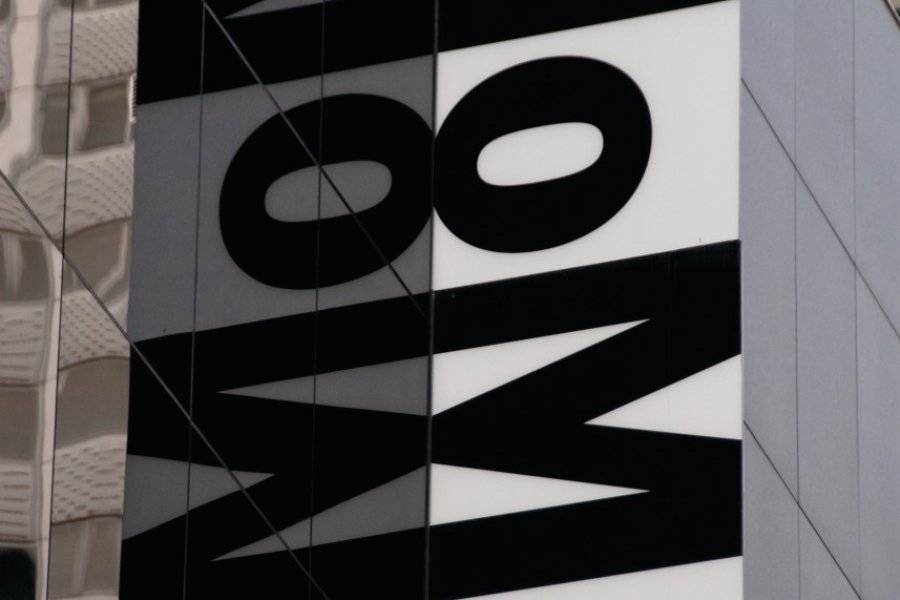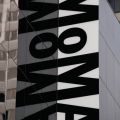This incredible museum with its collection of 200,000 works is a must for lovers of modern and contemporary art.
MoMA is the world's leading museum of modern art. The only one capable of presenting Vincent Van Gogh's celebrated Starry Night, Claude Monet'sWater Lilies and Salvador Dalí'sPersistence of Memory, as well as offering an exhaustive exhibition of paintings by Picasso or Matisse. Equally capable of presenting original and powerful exhibitions on political art, or organizing a retrospective of 150 years of photography. In short, one of the first museums to take modern painting seriously, but also photography, architecture, design, sculpture, drawing, industrial design, film and today electronic media.
For the most part, the works on display are very accessible to the general public, with only the temporary exhibitions aimed more specifically at connoisseurs. Crowds of all ages flock to the large glass-panelled facade on a perpetually busy street: the museum receives almost 3 million visitors every year.
Built on a piece of land belonging to the Rockefeller family, MoMA was set up in 1929 by New York's wealthiest families, just as Wall Street was about to crash. It has been the object of constant attention, benefiting from multiple renovations and expansions over the years. In 1983, it more than doubled its exhibition space, increased the conservation department by a third and added an auditorium, two restaurants and a bookshop. Despite this expansion, MoMA's physical space has never been able to accommodate its entire collection, which now totals 150,000 works. The latest major works, completed in 2019, enabled it to take over part of the neighboring buildings, including 53W53, a new skyscraper designed by Jean Nouvel, of which it now occupies the first floor. The other new section, built on the ruins of the building that housed the American Folk Art Museum in the 1960s, is devoted to temporary exhibitions. As a result, almost the entire 53rd Street block now belongs to MoMA. You'll feel more at ease, less rushed, and you might even get lost. The collections have not changed; they have simply been redesigned. Works by established artists are now displayed alongside more contemporary pieces. It's a strange, questioning mix, and that's the whole point of this change. Above all, MoMA is breaking new ground with the Studio, featuring installations, video art and spaces for interaction with the works. The Paula and James Crown Creativity Lab is a new experimental space for exploring ideas, questions and artistic processes related to the collection and current exhibitions. Visitors are invited to participate in conversations, engage with artists, make art, reflect and come up with suggestions for enjoying the museum more fully.
MoMA's most important collection is, of course, painting. It covers the entire spectrum of the late 19th and 20th centuries, from Impressionists to Cubists, Dadaists to Surrealists, German Expressionists to Italian Futurists, Pop Art to abstract painting. The gallery ranges from Picasso to Bacon, including Kandinsky, Cézanne, Van Gogh, Matisse and Dali, the museum's stars, as well as Balthus, Pollock, Gorky, Rothko, Bacon, Basquiat and Andy Warhol.
The collection devoted to drawings, photography and design is just as exceptional, with almost 10,000 manufactured objects, but let's not forget original plans by architects such as Frank Lloyd Wright and Le Corbusier. The interior garden is home to sculptures by such masters as Rodin, Matisse and Barnett Newman. Finally, MoMA holds some 22,000 films in its archives. The acquisition of this enormous collection began in 1935, with the sending of a museum emissary to Hollywood studios. Thanks to Harry Warner, Samuel Goldwyn, Walt Disney, Douglas Fairbanks and Charlie Chaplin, MoMA has built up a remarkable archive, the preservation of which is one of the main tasks of its film department. The museum has two basement screening rooms, with 217 and 460 seats, which de facto play the role of New York's film library, showing films on a rotating and permanent basis, with festivals and retrospectives devoted to the great American and foreign directors. Admission to the museum entitles the holder to view the films of the day.
Despite its prestige, MoMA has not escaped controversy. In 1971, after protests demanding the inclusion of African-American artists, Richard Hunt became the first black sculptor to have a major retrospective at the museum. Even today, MoMA is still very much oriented towards white European and American art, and the great challenge of this century will be to open up to the rest of the world.
Go to MoMA with an open mind, ready to be challenged and questioned. Admission isn't cheap, but the experience is undoubtedly worth it. Before you leave, take a look at the museum store, which sells surprisingly well-designed everyday objects.
Did you know? This review was written by our professional authors.
Members' reviews on MUSEUM OF MODERN ART (MOMA)
The ratings and reviews below reflect the subjective opinions of members and not the opinion of The Little Witty.















Je veux bien admettre que l'endroit est au top mais après concernant l'art... Il y a de nombreuses choses à voir, mais encore faut il suffisement s'y connaitre en Art Contemporain pour apprécié. J'ai apprécié un certain nombre d'oeuvres qui ne m'étaient pas trop inconnu mais aprés olala. De grands penseurs pourront critiquer mon avis sous prétexte que je ne connais rien et l'art, mais ayant pu apprécié réguliérement les expo au centre pompidou je l'accepte et surtout je le déconseille à tous les novices et amateurs basique de cet art.
Bonne diversité des tableaux et collections.
Indeed, the collections presented are so varied and rich that there is something for everyone.
The only downside is that day, a whole wing was closed, with important works, and that was not indicated to the entrance. Considering the entrance fee, we found that damage.